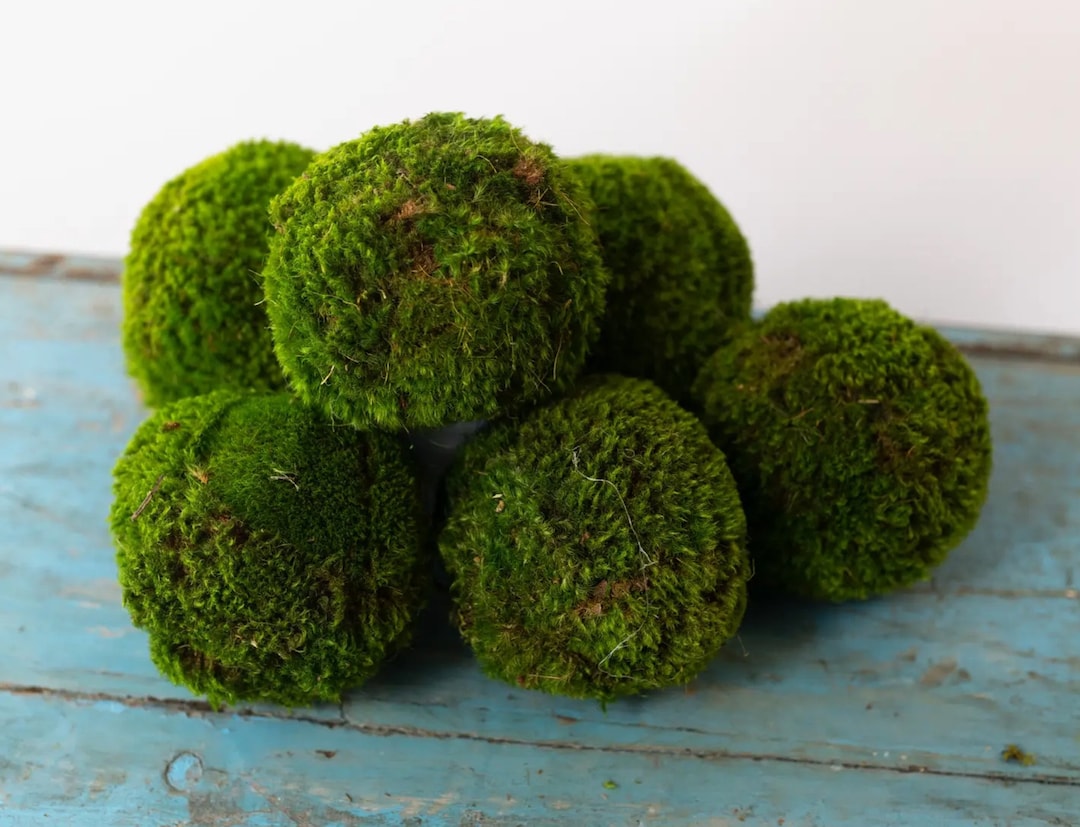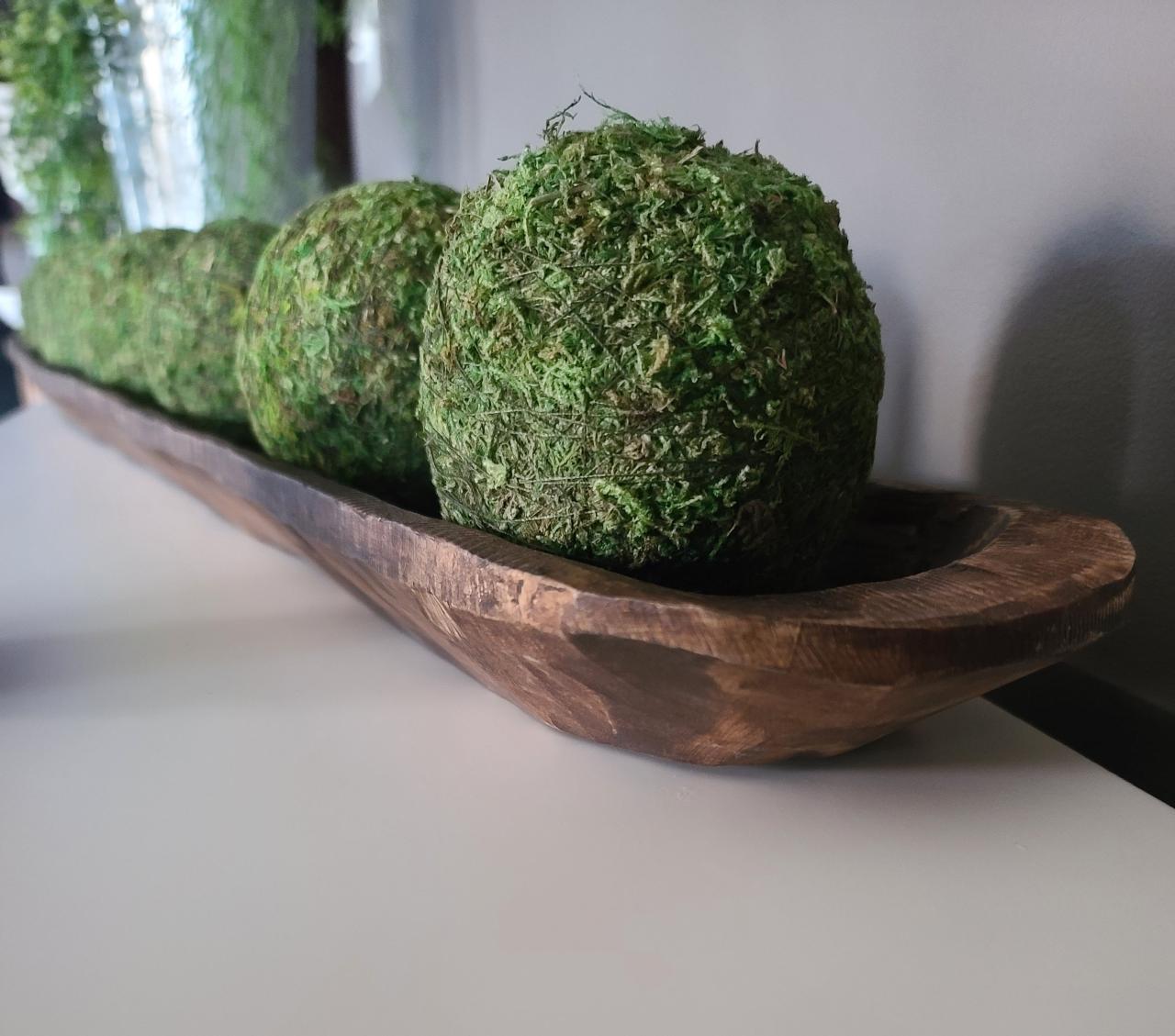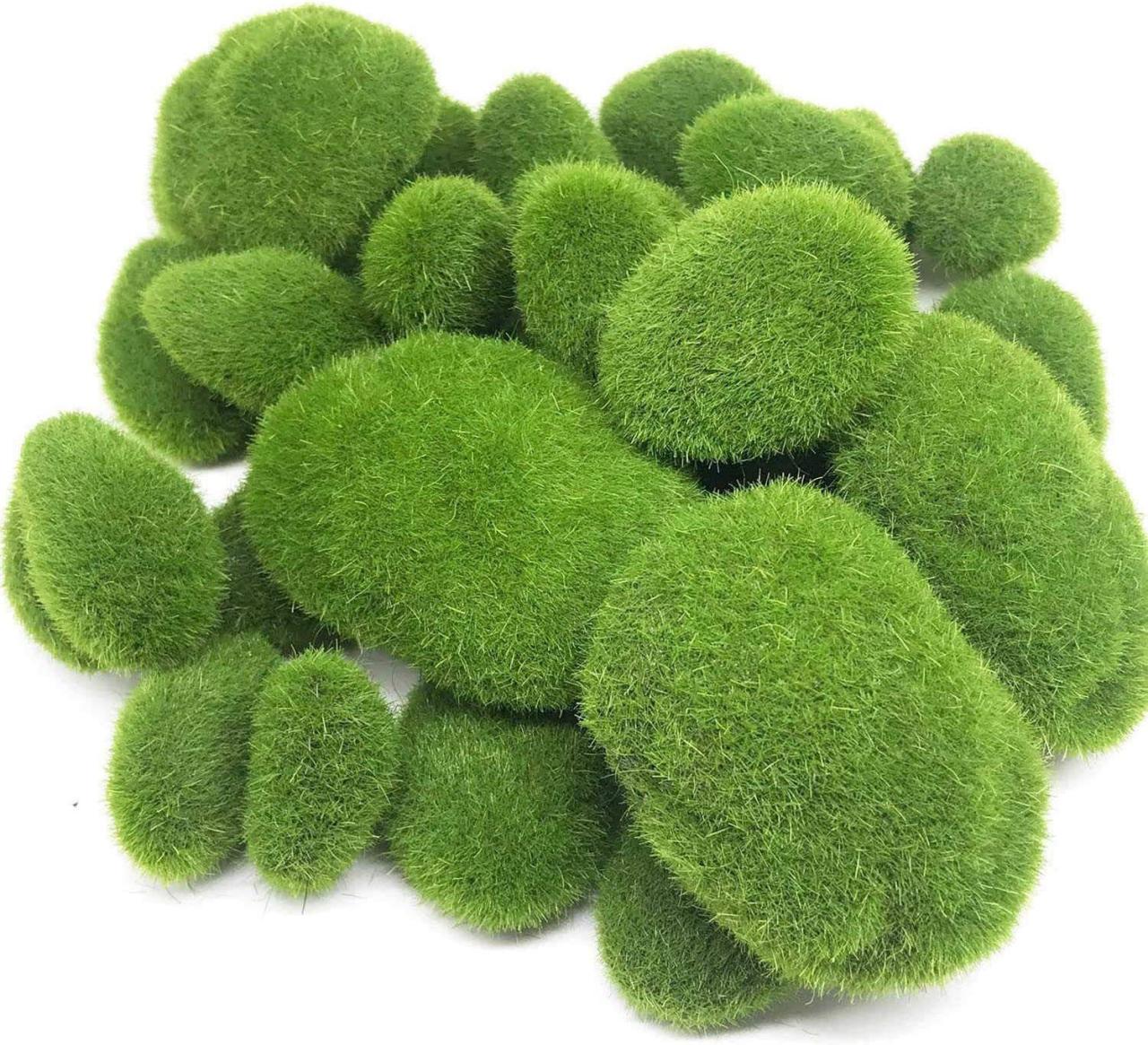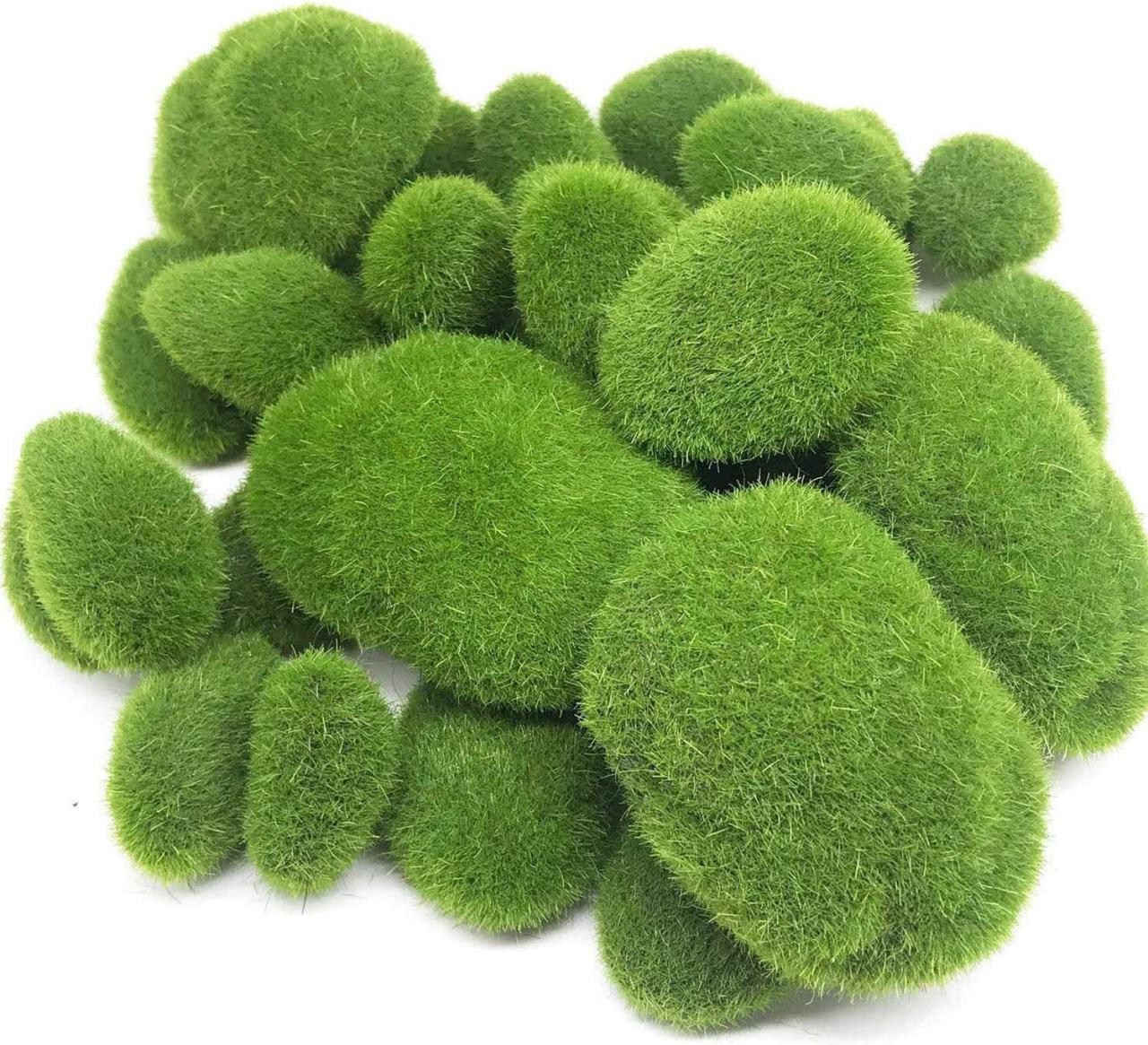Decorative moss balls are a captivating fusion of nature and art, transforming ordinary spaces into enchanting oases. These verdant orbs, adorned with lush moss, offer a serene touch to any home, evoking a sense of tranquility and bringing the outdoors in.
From their origins and popularity to their unique characteristics and versatility, this article delves into the fascinating world of decorative moss balls, providing insights into their creation, care, and countless decorative applications.
Types of Decorative Moss Balls
Decorative moss balls are versatile and come in various types, each with unique characteristics. The choice of moss species influences the ball’s appearance, texture, and longevity.
Moss Species
- Reindeer Moss:A lichen with a soft, velvety texture and a wide range of colors, from light green to deep brown. It is known for its durability and ability to retain moisture, making it suitable for both indoor and outdoor use.
- Preserved Moss:Treated with glycerin to maintain its freshness and color. It is typically bright green and has a slightly glossy appearance. Preserved moss is often used in indoor arrangements and requires minimal maintenance.
- Sheet Moss:A type of true moss that grows in flat sheets. It has a dense, lush texture and a vibrant green color. Sheet moss is often used to create larger moss balls or as a base for smaller ones.
Designs and Shapes
Moss balls can be crafted into various shapes and designs to suit different decorative styles.
- Spheres:The most common shape for moss balls, offering a classic and versatile look.
- Ovals:Elongated and oval-shaped moss balls add a touch of elegance and can be used as centerpieces or focal points.
- Hearts:Heart-shaped moss balls are perfect for Valentine’s Day or other romantic occasions.
- Animals:Moss balls can be shaped into animal figures, such as bunnies, birds, or turtles, for a whimsical touch.
Creating Decorative Moss Balls

Creating decorative moss balls is a simple and fun way to add a touch of nature to your home decor. They are also a great way to use up leftover moss from other projects.
To make moss balls, you will need the following materials and tools:
- Moss
- Twine or string
- Scissors
- A bowl of water
Once you have gathered your materials, you can follow these steps to make your moss balls:
- Gather a handful of moss and soak it in a bowl of water for 10-15 minutes. This will help to soften the moss and make it easier to work with.
- Once the moss is soaked, remove it from the water and squeeze out any excess water.
- Form the moss into a ball. The size of the ball is up to you, but it should be small enough to fit in your hand.
- Tie the moss ball together with twine or string. Make sure the twine is tight enough to hold the ball together, but not so tight that it cuts into the moss.
- Trim any excess twine or string.
Tips for Shaping and Preserving Moss Balls
Once you have made your moss balls, you can shape them as desired. You can use your fingers to shape the balls into ovals, squares, or even hearts. You can also use a rolling pin to flatten the balls or a knife to cut them into different shapes.
To preserve your moss balls, keep them in a cool, humid environment. You can mist them with water every few days to keep them moist. You can also place them in a terrarium or on a bed of gravel to help them retain moisture.
Care and Maintenance

To ensure the longevity and health of your decorative moss balls, it’s crucial to provide an optimal environment and proper care. This includes watering, misting, fertilizing, and addressing any potential issues that may arise.
Watering and Misting
- Moss balls prefer moist conditions but not excessive water. Water them only when the moss feels dry to the touch.
- Use room-temperature water and gently pour it over the moss ball until it is thoroughly moistened.
- Avoid overwatering, as this can lead to root rot. If the moss ball becomes waterlogged, gently squeeze out any excess water.
- Regularly mist the moss ball with a spray bottle to keep it hydrated and prevent it from drying out.
Fertilizing
- Moss balls do not require frequent fertilization. Fertilize them once a month during the growing season (spring and summer) using a diluted liquid fertilizer specifically designed for moss.
- Follow the instructions on the fertilizer label carefully to avoid over-fertilizing.
Identifying and Addressing Common Problems, Decorative moss balls
- Brown or dry moss:This can be caused by underwatering or low humidity. Increase watering and misting frequency.
- Yellow or pale moss:This can indicate overwatering or lack of sunlight. Reduce watering and provide more indirect sunlight.
- Mold or algae growth:This can occur in overly moist conditions. Remove any visible mold or algae and reduce watering and misting frequency.
- Insects:Moss balls can occasionally attract insects such as springtails or fungus gnats. Use an insecticidal soap to control infestations.
Final Wrap-Up: Decorative Moss Balls

In conclusion, decorative moss balls are not merely ornamental accents but vibrant expressions of creativity and connection to nature. Their aesthetic appeal, potential health benefits, and low-maintenance nature make them an exceptional choice for home decor enthusiasts seeking to infuse their living spaces with a touch of tranquility and natural beauty.
FAQ Section
What are the different types of moss used in decorative moss balls?
Decorative moss balls commonly utilize various moss species, including reindeer moss, sphagnum moss, and sheet moss, each offering unique textures and hues.
How long do decorative moss balls typically last?
With proper care, decorative moss balls can maintain their vibrant appearance for several years, requiring minimal maintenance and occasional misting.
Can decorative moss balls be used outdoors?
While decorative moss balls are primarily intended for indoor use, they can be placed outdoors for short periods in shaded areas, provided they are protected from direct sunlight and excessive moisture.

